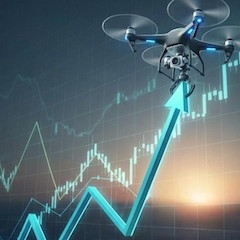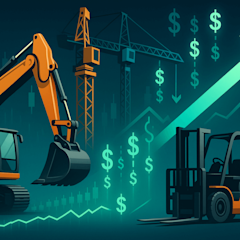
A Bumpy Road Ahead to Trump 2.0
With the 2024 election in the rearview mirror and Donald Trump set to take office on January 20, 2025, what will his second term mean for America?
Let’s review the good, the bad and the ugly to prepare you for what’s coming:
The Good
Trump will pursue a twenty-first-century version of what was originally known as the American System. This system relied on the following policies:
- High tariffs to support manufacturing and high-paying jobs
- Infrastructure investment (public and private) to support productivity
- A strong army and navy to protect the U.S. but not to fight foreign wars
- A central bank with limited powers to provide liquidity to commerce
To the extent there was government spending, it was for productive projects such as canal and road building and later to support railroads. To the extent that early central banks existed, they were for secure lending to sound entities (including the U.S. government) and not for purposes such as printing money, fixing interest rates or “stimulus.”
The entire system could be summarized as sound money, smart investment and a strong military in the service of high-paying American jobs.
The American System prevailed from 1790 to 1962 with occasional periods of agrarian ascendency and some disruptions such as the Civil War. Beginning after World War I, the neo-liberal movement of Austrian economists and libertarians began to promote globalist policies of open borders, open capital accounts and free trade.
Of course, free trade is a myth because of subsidies and non-tariff barriers. Comparative advantage is obsolete because the factors of production are highly mobile. Taiwan had no comparative advantage in semiconductors in 1979, but today they dominate global production. They made that happen through a Taiwanese version of the American System.
In contrast, the neo-liberals were living an ideological fantasy in which globalism was to displace sovereignty. At a minimum, their goal was encasement of sovereigns in a larger orb of multilateral institutions such as the IMF, World Bank, WTO and the United Nations.
Beginning with the Trade Expansion Act of 1962, the Trade Act of 1974 and successive rounds under the General Agreement on Tariffs and Trade (today the WTO), the U.S. embraced the neo-liberal consensus including drastic tariff cuts. As jobs moved offshore to take advantage of cheap labor, capital followed as direct foreign investment.
The result was the hollowing-out of U.S. manufacturing, wage stagnation, slower growth, greater debt and a succession of failed wars. The open border policy of Biden-Harris is consistent with neo-liberal views on the end of sovereignty but is a death-knell for American jobs and social cohesion.
Trump and his economic team will return the United States to the pre-1962 glory days with the revival of the American System. Foreign companies will be free to sell goods to Americans but only if they are manufactured in the U.S.
This will lead to a wave on inbound investment in the U.S., a reduction in U.S. trade deficits, a stronger dollar (as the world demands dollars to invest here), and higher wages for U.S. workers. Higher wages will raise real incomes, stimulate consumption, decrease income inequality and expand the tax base to help reduce deficits without raising tax rates.
It’s a win for American manufacturing and a win for the American people.
The Bad
But before we get there, expect a tough economic (and market) environment in the beginning of Trump’s term. Administrations matter, personnel matters, policy matters, but there’s something bigger than Trump in the White House. It’s called the economy. The economy goes its own way. Business cycles have not been erased. The transition from Biden to Trump will bring economic pain as Trump inherits Joe Biden’s mess.
There are ample signs that the economy is headed for a recession (or may already be in one) including higher unemployment, lower interest rates (low rates are not "stimulus;" they are associated with recessions and depressions), flattening yield curves, negative swap spreads, collateral shortages in Eurodollar markets, reductions in China’s reserve positions (not a sign of "dumping" Treasuries but a sign of a dollar shortage and a need to provide liquidity to banks), declining oil prices (despite output reductions), and others.
The emerging recession will cause a stock market drawdown as earnings are revised downward, consumer confidence crumbles, consumer discretionary spending hits a wall and precautionary savings rise. The world will not bail-out the U.S. economy because China, Japan, Germany and the UK are all slowing economically at the same time or already in contraction.
The U.S. economy (in contrast to economists) does not pay that much attention to elections or new administrations. It’s too big and moves to its own complex tempo. Investors may cheer the Trump policies and his reelection, but it will be a very bumpy ride in the first year of Trump 2.0.
The Ugly
Don’t underestimate “The Resistance”. Because it’s out there and can do a lot of damage in a couple of months before Inauguration Day. What are they up to? Biden and company are trying to Trump-proof the presidency by signing contracts. Let me explain.
Remember the famous Inflation Reduction Act? Despite its name, the act actually increased inflation by being the Green New Scam in disguise. There was about $850 billion for garbage like windmills, solar modules, and green initiatives. A lot of the money went to the Democrat’s favorite contractors and electric vehicle makers. That passed in August of 2022, but guess what?
Most of the money hasn’t been spent yet.
So, now there is a mad scramble to sign contracts. You actually can’t spend the money that fast, but you can sign a contract with a five-year life or three-year life saying you’ll spend it over three years. And the idea is signing the contract now so that even when Trump becomes president, even though the money hasn’t been spent, it has been appropriated and it’s contractually bound.
And that’s the key. Bind the spending in contractual form so Trump can’t do anything about it. There’s a lot of wasteful government spending that’s in the pipeline. The Democrats are also going to try to tie up as much federal land as they can to take it out of circulation to stall oil and natural gas production as well as mining.
The Resistance will try to get as much money to Ukraine as they can. They will try to appoint as many judges as they can. The Republicans can gum up the works a little bit, but the Democrats still have the majority in the Senate right now. And the one useful role of Kamala Harris left is being a tie breaking vote in the Senate if needed.
The Resistance could cause havoc in the months leading up to Trump taking office and beyond depending on how much damage they do. It won’t be a pretty picture for markets with so many companies impacted by their actions on top of a recession.
Bottom Line
After taking office, Trump’s agenda will incentivize billions of dollars of investments in U.S. energy and manufacturing jobs. He will make domestic oil drilling and refining a top priority which will provide America with energy independence. This will also benefit companies (and provide more jobs) in the energy sector.
But there will be plenty of minefields for markets to deal with in the first year as the transition takes place.
Want More Jim Rickards' Strategic Intelligence?
Do you like this content? Would you like to know more? Because we have this and much more to share with you. Get started today!









